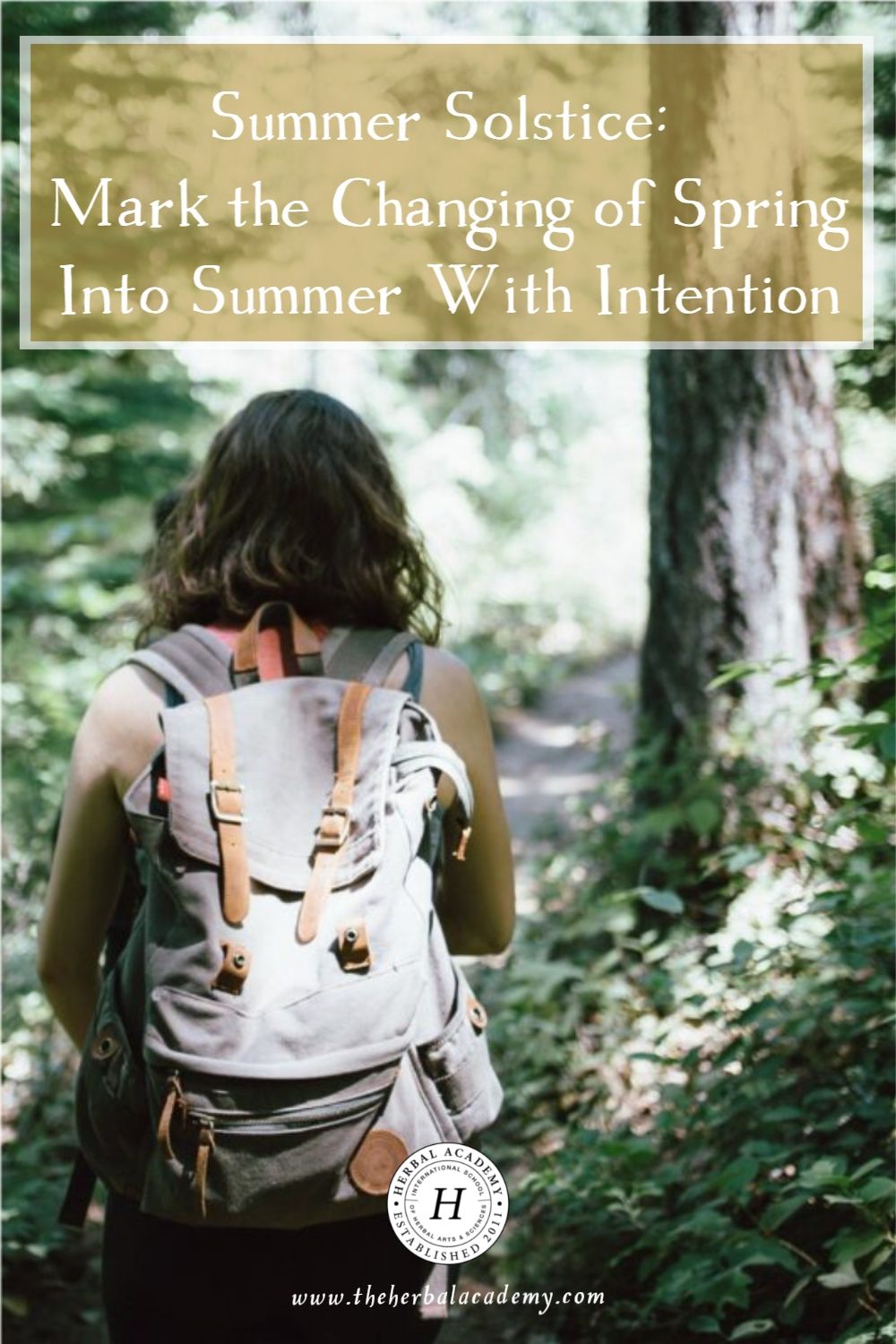
Summer Solstice: Mark the Changing of Spring Into Summer With Intention
It seems to me as though the more years I accumulate the faster they seem to fly by, each racing past more quickly than the last. A core lesson of my adult life has been to find ways in which I can regularly slow down and honor the passage of time. One of my favorite ways to practice this is by honoring the quarterly passing of the seasons on the spring and fall equinoxes, the winter solstice, and the summer solstice.
I am particularly fond of these milestones throughout the year because of the connection to what is happening in the natural world. The passing of the seasons not only reminds me that time is going by, but also grounds me in the larger reality that I am a part of something much bigger than myself. These seasonal markers offer moments to pause, gather myself, and reflect on the past while looking toward the next season.
By intentionally marking these annual milestones I have been able to make space to appreciate what has happened in the previous season and consider the possibilities for the next. This practice has allowed me to slow down and appreciate the cyclical rhythm of life, relishing the lessons and blessings of each chapter.
With the summer solstice quickly approaching to mark the peak of daylight hours and the beginning of the summer season, let’s look at some ways we can embrace and even ritualize the energetic moment and honor the passing of spring and welcoming of summer.

What is a Solstice?
A solstice occurs twice each year. In the northern hemisphere, the earth’s axis tilts toward the sun at the summer solstice in June and tilts away from the sun at the winter solstice in December (and vice versa for the southern hemisphere). The winter solstice is the shortest day of the year, marking the beginning of winter. The summer solstice is the longest day of the year, marking the beginning of summer.
This is not to say that there are more or less hours in the day around each solstice, but instead that there are more or less hours of daylight in each day. The number of sunlit hours increases each day from the winter to the summer solstice. The summer solstice, which occurs on June 21, 2022 in the northern hemisphere, will have the most daylight hours of any day this year. From the point of the summer solstice forward the number of sunlit hours will diminish until the winter solstice on December 21, 2022.
In many cultures, the solstices are days marked by ritual and celebration of their connection to seasons, agriculture, and livelihood. The ancient Greeks celebrated the festival Kronia, to honor Cronus, the god of agriculture, around the summer solstice (Konnikova, 2013). The Druids celebrated Midsummer, a festival still honored in some Scandinavian countries to this day.
I did not grow up with any cultural celebration of the summer solstice but have appreciation and reverence for the cultural traditions that have or still do mark the solstice with festivals, celebrations, or rituals. For me, the decision to mark these quarterly shifts in seasons came from a desire to distance myself from the traditional capitalistic holidays of the culture I grew up in. For me, honoring the rhythms of and celebrating my connection to the natural world feels more fulfilling than a majority of the holiday celebrations I grew up acknowledging.
All of the suggestions I make in this article are things that I have done personally, and ideas that I have come up with for meaningfully marking the summer solstice. In an effort not to appropriate the practices of cultures I don’t have the lived experience to be able to honor and understand, it has been important to me for these intentional activities to come organically from my own heart and mind. That being said, this is not an all-encompassing list of possibilities. Please take any suggestions that resonate with you and feel free to expand or change them, or even use them as a jumping-off point for brainstorming your own seasonal rituals.

Marking the Summer Solstice with Intention
Since beginning to incorporate the ritual honoring of the seasons as they pass, I have found creative ways to embrace the longest day of the year, whether I’ve had full disposal of the day or needed to work around life’s busy schedule. What I have found is that it is not so much about the activities you engage in, but the intentionality behind them that make the mindful honoring of shifts and seasons so impactful.
Regardless of what my day looks like, I make a concerted effort to simply be awake from sunup until sundown on the summer solstice. I also make it a point to be out in nature, soaking up the sun’s rays, and basking in its warmth. In the years when I’ve had the day off, I have planned day trips to my favorite watering hole, foraging spots, or hiking trails where I can relax and enjoy myself.
However, life isn’t always so ideal. In the years when I’ve had work or personal responsibilities to tend to, I make it a point to be outside early in the morning before my obligations. I tend to have more time to myself during the earlier hours of the day and make plans to intentionally spend time outside. Or, if you have obligations in the earlier part of the day, then you can make time to be outdoors in nature in the latter part of the day. I find that either the early or late sunny hours on summer solstice feel like a bonus of extra daylight to appreciate.

Brew a Cup Of Sun Tea
Another practice I especially enjoy on this day is brewing up a sun tea. If you have access to your own herb garden, it is a wonderful experience to harvest whatever is plentiful at the time of the summer solstice and brew up the season’s abundance. If you do not have your own herb garden, you can plan your brew to include plant allies that grow abundantly during this time of year, such as plantain (Plantago major), red clover (Trifolium pratense), or mint (Mentha spp.).
Making a sun tea is a great way to infuse some ritual and intentionality into the observance of the summer solstice, even if you have to be out and about for the better part of the day. Simply place your chosen herb(s) into a large canning jar, fill the jar with water, and screw the lid in place. Then place the jar out on your front porch where it will be in the sun for a few hours of the day. When you return to the jar, you will see how the energy of the sun transforms the contents of the jar into tea. Enjoy over ice for a refreshing summer solstice treat.

Let The Sunshine In
There are so many simple, convenient ways to celebrate the sun on the summer solstice. If you find yourself needing to do laundry on this day, then consider if there is a way for you to dry your clothes outside in the sunshine. If you have a lot of things to get done, perhaps you can run all your errands with the windows down, take your meals outside, or pick out an outfit that helps you to feel especially sunny. Again, it’s not so much about what activity you choose to engage in, but the act of intentionally choosing activities that allow you to acknowledge, embrace, and sync with the physical and energetic rhythms of nature.
In Closing,
The summer solstice marks the shifting of the seasons and the peak of daylight hours and it is also just about halfway through the calendar year. This is a day to embrace the warmth and light of the sun as well as the abundance of energy that summer has to offer us. There are many ways that you could choose to mark the shifting of seasons. Allow your inner guidance to lead you to ways of celebrating the seasons that feel good and right for you.

REFERENCES
Konnikova, M. (2013, June 21). Why we celebrate the summer solstice. Scientific American Blog Network. https://blogs.scientificamerican.com/literally-psyched/why-we-celebrate-the-summer-solstice/








